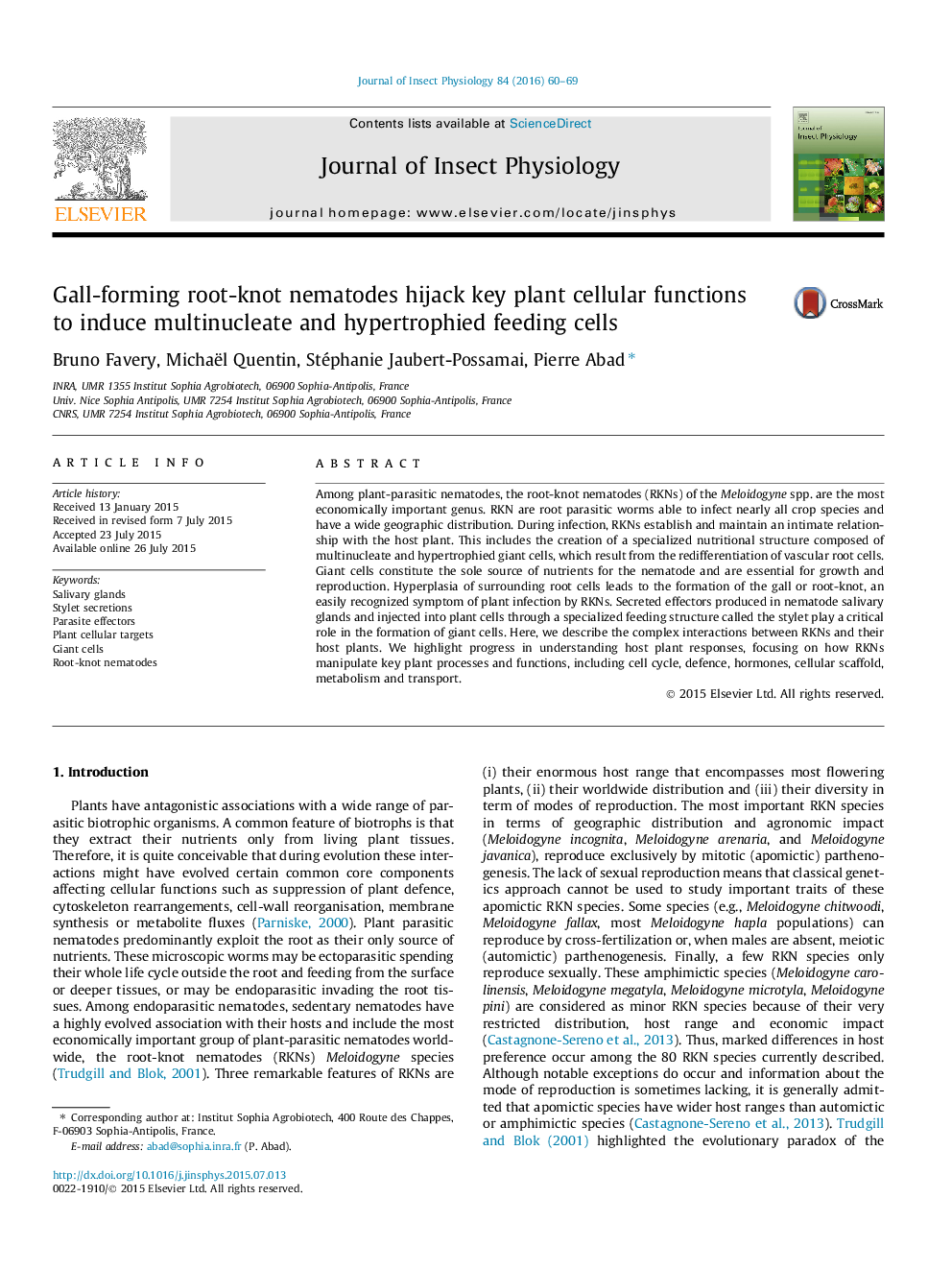| Article ID | Journal | Published Year | Pages | File Type |
|---|---|---|---|---|
| 2840335 | Journal of Insect Physiology | 2016 | 10 Pages |
•Root-knot nematodes manipulate host plants to induce specialized feeding sites.•Nematode secreted salivary proteins play a critical role in the interaction.•Key hijacked functions include cell cycle, defence, hormones and cellular scaffold.
Among plant-parasitic nematodes, the root-knot nematodes (RKNs) of the Meloidogyne spp. are the most economically important genus. RKN are root parasitic worms able to infect nearly all crop species and have a wide geographic distribution. During infection, RKNs establish and maintain an intimate relationship with the host plant. This includes the creation of a specialized nutritional structure composed of multinucleate and hypertrophied giant cells, which result from the redifferentiation of vascular root cells. Giant cells constitute the sole source of nutrients for the nematode and are essential for growth and reproduction. Hyperplasia of surrounding root cells leads to the formation of the gall or root-knot, an easily recognized symptom of plant infection by RKNs. Secreted effectors produced in nematode salivary glands and injected into plant cells through a specialized feeding structure called the stylet play a critical role in the formation of giant cells. Here, we describe the complex interactions between RKNs and their host plants. We highlight progress in understanding host plant responses, focusing on how RKNs manipulate key plant processes and functions, including cell cycle, defence, hormones, cellular scaffold, metabolism and transport.
Graphical abstractFigure optionsDownload full-size imageDownload as PowerPoint slide
